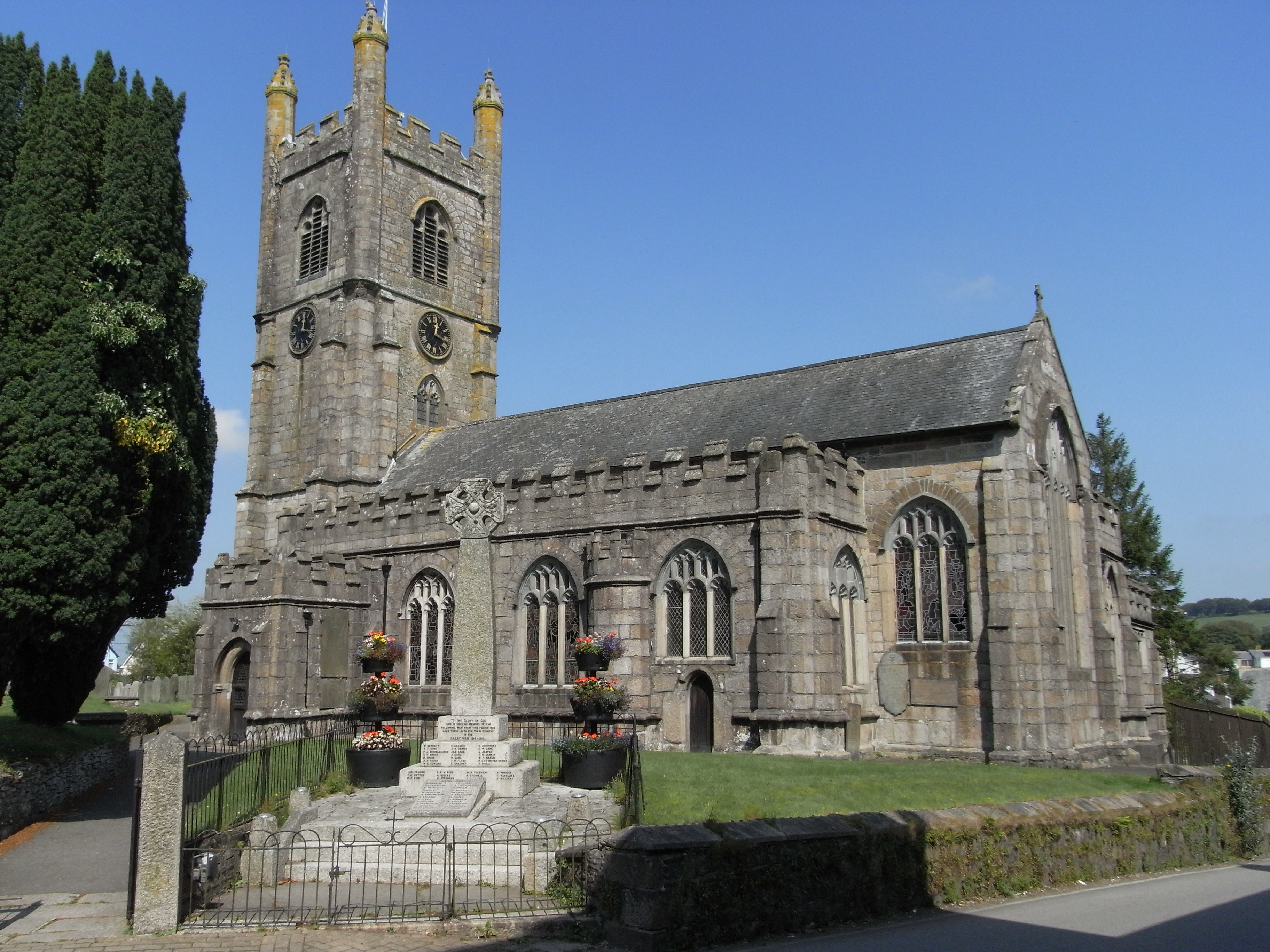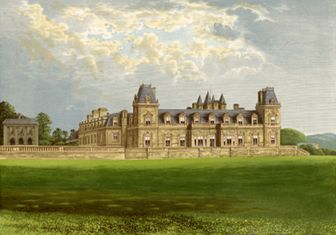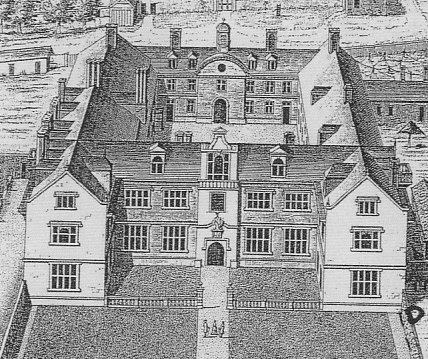|
John Trefusis
John Trefusis (c. 1586 – 1647) lord of the manor of Trefusis in the parish of Mylor in Cornwall, was an English politician who sat in the House of Commons from 1621 to 1622. Origins Trefusis was the eldest son and heir of John Trefusis (d.1603) of Trefusis by his wife Mary Gaverigan, a daughter and co-heiress of Walter Gaverigan of Gaverigan, Cornwall. The Trefusis family (anciently ''de Trefusis'') continue in 2015 as lords of the manor of Trefusis, from which they took their surname at some time before the 13th century. Career He matriculated at Broadgates Hall, Oxford on 3 May 1605 aged 18 and was a student of law at the Inner Temple in 1607. He succeeded his father in 1603, inheriting several manors. In 1621 he was elected Member of Parliament for Truro in Cornwall. He was appointed High Sheriff of Cornwall for 1626–27 and Vice-Admiral of North Cornwall from 1645 to his death. Marriages and children He married twice: *Firstly in 1611 to Jane Trefry, the daughter ... [...More Info...] [...Related Items...] OR: [Wikipedia] [Google] [Baidu] |
Trefusis Arms
Flushing ( kw, Nanskersys) is a coastal village in the civil parish of Mylor, west Cornwall, UK. It is east of Penryn and south of Truro. It faces Falmouth across the Penryn River, an arm of the Carrick Roads. The village is known for its yearly Regatta week in July. Flushing lies within the Cornwall Area of Outstanding Natural Beauty (AONB). Almost a third of Cornwall has AONB designation, with the same status and protection as a National Park. History Henry VIII intended to build a castle on Trefusis Point, to accompany those built at Pendennis and St. Mawes, but due to the expensive wars was unable to finance it. The village was founded in 1661; there is disagreement about whether there are any houses of the late 17th century. Originally named Nankersey, meaning ''valley of the reed swamp'', the village was given its name by Dutch engineers from Flushing in the Netherlands who built the three main quays in the village. The grand houses on St Peter's Hill, the road that ... [...More Info...] [...Related Items...] OR: [Wikipedia] [Google] [Baidu] |
High Sheriff Of Cornwall
Sheriffs and high sheriffs of Cornwall: a chronological list: The right to choose high sheriffs each year is vested in the Duchy of Cornwall. The Privy Council, chaired by the sovereign, chooses the sheriffs of all other English counties, other than those in the Duchy of Lancaster. This right came from the Earldom of Cornwall. In the time of earls Richard and Edmund, the steward or seneschal of Cornwall was often also the sheriff. Sheriffs before the 14th century 14th-century sheriffs 15th-century sheriffs {{columns-list, colwidth=30em, *1400–1404: Henry of Monmouth{{sfn, Hughes, 1898, p=21{{sfn, Polsue, 1872, p=122{{sfn, Polwhele, 1816, p=106 **28 October 1400: Sir William Marney undersheriff{{sfn, Hughes, 1898, p=21 **Michaelmas 1401: Sir John Trevarthian undersheriff{{sfn, Hughes, 1898, p=21 **Easter 1402: Sir John Arundell undersheriff,{{sfn, Hughes, 1898, p=21 of Lanherne **6 October 1402: William Bodrugan undersheriff{{sfn, Hughes, 1898, p=21 **22 October ... [...More Info...] [...Related Items...] OR: [Wikipedia] [Google] [Baidu] |
Robert Trefusis, 17th Baron Clinton
Robert George William Trefusis, 17th Baron Clinton (1764 – 1797) of Trefusis in Cornwall and Heanton Satchville, Petrockstowe in Devon, was an English peer. He was the son of Robert Cotton Trefusis and his wife, Hon. Anne St John, and great-great-grandson of Francis Trefusis, whose wife Bridget was in remainder to the barony of Clinton through her mother Lady Arabella Rolle, daughter of Theophilus Clinton, 4th Earl of Lincoln. Trefusis succeeded to the barony in 1791 on the death of his third cousin George Walpole, 3rd Earl of Orford. Marriage In 1786 he married Albertina Marianna Gaulis (d. 1798), daughter of Jean Abraham Rodolph Gaulis (d. 1788) of Lausanne, Switzerland, an important magistrate of that city. He is described as "notaire juré, conseiller, secrétaire baillival, banneret de la Cité". In 1779 he resigned as "secrétaire baillival" after 40 years' service and requested that his son J. Juste Gaulis should succeed him, who had seconded for him during the last th ... [...More Info...] [...Related Items...] OR: [Wikipedia] [Google] [Baidu] |
Rosemary Lauder
Rosemary Anne Lauder (living in 2015), of North Devon, England, is a historian of the county of Devon. She started her writing career in the 1980s as a journalist contributing articles on the subject of gardening, in which she retains a strong interest. She received an MA in Garden History from the University of Bristol. She is a long-standing member of the Devon Gardens Trust Devon ( , historically known as Devonshire , ) is a ceremonial and non-metropolitan county in South West England. The most populous settlement in Devon is the city of Plymouth, followed by Devon's county town, the city of Exeter. Devon is a ..., in which organisation she plays an active role. She is author and publisher of many books and booklets on the topics of walking in North Devon, the topography of Exmoor and North Devon, and the history of the region. She lived for five years in a former gardener's cottage rented from the Tapeley Park estate in the parish of Westleigh, North Devon. Her h ... [...More Info...] [...Related Items...] OR: [Wikipedia] [Google] [Baidu] |
History Of Parliament
The History of Parliament is a project to write a complete history of the United Kingdom Parliament and its predecessors, the Parliament of Great Britain and the Parliament of England. The history will principally consist of a prosopography, in which the history of an institution is told through the individual biographies of its members. After various amateur efforts the project was formally launched in 1940 and since 1951 has been funded by the Treasury. As of 2019, the volumes covering the House of Commons for the periods 1386–1421, 1509–1629, and 1660–1832 have been completed and published (in 41 separate volumes containing over 20 million words); and the first five volumes covering the House of Lords from 1660-1715 have been published, with further work on the Commons and the Lords ongoing. In 2011 the completed sections were republished on the internet. History The publication in 1878–79 of the ''Official Return of Members of Parliament'', an incomplete list of the ... [...More Info...] [...Related Items...] OR: [Wikipedia] [Google] [Baidu] |
Pocket Borough
A rotten or pocket borough, also known as a nomination borough or proprietorial borough, was a parliamentary borough or constituency in England, Great Britain, or the United Kingdom before the Reform Act 1832, which had a very small electorate and could be used by a patron to gain unrepresentative influence within the unreformed House of Commons. The same terms were used for similar boroughs represented in the 18th-century Parliament of Ireland. The Reform Act 1832 abolished the majority of these rotten and pocket boroughs. Background A parliamentary borough was a town or former town that had been incorporated under a royal charter, giving it the right to send two elected burgesses as Members of Parliament (MPs) to the House of Commons. It was not unusual for the physical boundary of the settlement to change as the town developed or contracted over time, for example due to changes in its trade and industry, so that the boundaries of the parliamentary borough and of the ph ... [...More Info...] [...Related Items...] OR: [Wikipedia] [Google] [Baidu] |
Callington, Cornwall
Callington ( kw, Kelliwik) is a civil parish and town in east Cornwall, England, United Kingdom about north of Saltash and south of Launceston. Callington parish had a population of 4,783 in 2001, according to the 2001 census. This had increased to 5,786 in the 2011 census. Geography The town is situated in east Cornwall between Dartmoor to the east and Bodmin Moor to the west. A former agricultural market town, it lies at the intersection of the south–north A388 Saltash to Launceston road and the east–west A390 Tavistock to Liskeard road. Kit Hill is a mile north-east of the town and rises to with views of Dartmoor, Bodmin Moor and the River Tamar. The hamlets of Bowling Green, Kelly Bray, Frogwell and Downgate are in the parish. Railway station Callington railway station was the terminus of a branch line from Bere Alston, the junction with the Southern Railway's Tavistock to Plymouth line. The railway line beyond Gunnislake to the Callington terminus was ... [...More Info...] [...Related Items...] OR: [Wikipedia] [Google] [Baidu] |
Stevenstone
Stevenstone is a former manor within the parish of St Giles in the Wood, near Great Torrington, North Devon. It was the chief seat of the Rolle family, one of the most influential and wealthy of Devon families, from c. 1524 until 1907. The Rolle estates as disclosed by the Return of Owners of Land, 1873 (corrected by Bateman, 1883) comprised 55,592 acres producing an annual gross income of £47,170, and formed the largest estate in Devon, followed by the Duke of Bedford's estate centred on Tavistock comprising 22,607 with an annual gross value of nearly £46,000. From the Glorious Revolution of 1688 to the Reform Act of 1832 the county parliamentary representatives were chosen effectively from only ten great families, mostly territorial magnates. The three most dominant of these were the Bampfyldes of Poltimore House and North Molton, the Courtenays of Powderham Castle, and the Rolles of Stevenstone and Bicton. The Rolles were not from the mediaeval aristocracy as were ... [...More Info...] [...Related Items...] OR: [Wikipedia] [Google] [Baidu] |
George Rolle
George Rolle (c. 1486 – 20 November 1552) of Stevenstone in the parish of St Giles in the Wood near Great Torrington in Devon, was the founder of the wealthy, influential and widespread Rolle family of Devon, which according to the Return of Owners of Land, 1873 in the person of Hon. Mark Rolle (died 1907), the adoptive heir of John Rolle, 1st Baron Rolle (died 1842), had become by that year the largest landowner in Devon with about 55,000 acres. He was a Dorset-born London lawyer who in 1507 became Keeper of the Records of the Court of Common Pleas and was elected as a Member of Parliament for Barnstaple in 1542 and 1545. He became the steward of Dunkeswell Abbey in Devon, and following the Dissolution of the Monasteries he purchased much ex-monastic land in Devon. Not only was he the founder of his own great Devonshire landowning dynasty but he was also an ancestor of others almost as great, including the Acland baronets of Killerton, the Wrey Baronets of Tawstock and t ... [...More Info...] [...Related Items...] OR: [Wikipedia] [Google] [Baidu] |
Heraldic Visitation
Heraldic visitations were tours of inspection undertaken by Kings of Arms (or alternatively by heralds, or junior officers of arms, acting as their deputies) throughout England, Wales and Ireland. Their purpose was to register and regulate the coats of arms of nobility, gentry and boroughs, and to record pedigrees. They took place from 1530 to 1688, and their records (akin to an upper class census) provide important source material for historians and genealogists. Visitations in England Process of visitations By the fifteenth century, the use and abuse of coats of arms was becoming widespread in England. One of the duties conferred on William Bruges (or Brydges), the first Garter Principal King of Arms, was to survey and record the armorial bearings and pedigrees of those using coats of arms and correct irregularities. Officers of arms had made occasional tours of various parts of the kingdom to enquire about armorial matters during the fifteenth century. However, it was ... [...More Info...] [...Related Items...] OR: [Wikipedia] [Google] [Baidu] |
Theophilus Clinton, 4th Earl Of Lincoln
Theophilus Clinton, 4th Earl of Lincoln, KB (1599 – 21 May 1667), styled Lord Clinton until 1619, was an opponent of Charles I during and preceding the English Civil War. Family The eldest son of the 3rd Earl of Lincoln and Elizabeth Knyvet, whose brother became the 1st Baron Knyvet, Lord Clinton studied at Emmanuel College, Cambridge. He was appointed a Knight of the Bath at the investiture of Charles, Duke of York as Prince of Wales at Whitehall on 3 November 1616. After succeeding to the family titles upon the death of his father in 1619, he married firstly, in 1622, the Hon Bridget Fiennes, only daughter of William Fiennes, 7th Baron Saye and Sele (later 1st Viscount); the Earl and Countess of Lincoln had: * Edward Clinton, Baron Clinton (1624–1657), married 1644 Lady Anne Holles (died London, October 1707), eldest daughter of the 2nd Earl of Clare, and had: ** Edward Clinton, 5th Earl of Lincoln (1645–1692), KB 1661, '' de uxoris'' seigneur de Lavérune, mar ... [...More Info...] [...Related Items...] OR: [Wikipedia] [Google] [Baidu] |
Heanton Satchville, Petrockstowe
Heanton Satchville was a historic manor in the parish of Petrockstowe, North Devon, England. With origins in the Domesday manor of Hantone, it was first recorded as belonging to the Yeo family in the mid-14th century and was then owned successively by the Rolle, Walpole and Trefusis families. The mansion house was destroyed by fire in 1795. In 1812 Lord Clinton purchased the manor and mansion of nearby Huish, renamed it Heanton Satchville, and made it his seat. The nearly-forgotten house was featured in the 2005 edition of Rosemary Lauder's "Vanished Houses of North Devon". A farmhouse now occupies the former stable block with a large tractor shed where the house once stood. The political power-base of the Rolle family of Heanton Satchville was the pocket borough seat of Callington in Cornwall, acquired in 1601 when Robert Rolle (died 1633) purchased the manor of Callington.Hunneyball (2010) Description of mansion The mansion was at one time "one of the most imposing ho ... [...More Info...] [...Related Items...] OR: [Wikipedia] [Google] [Baidu] |





